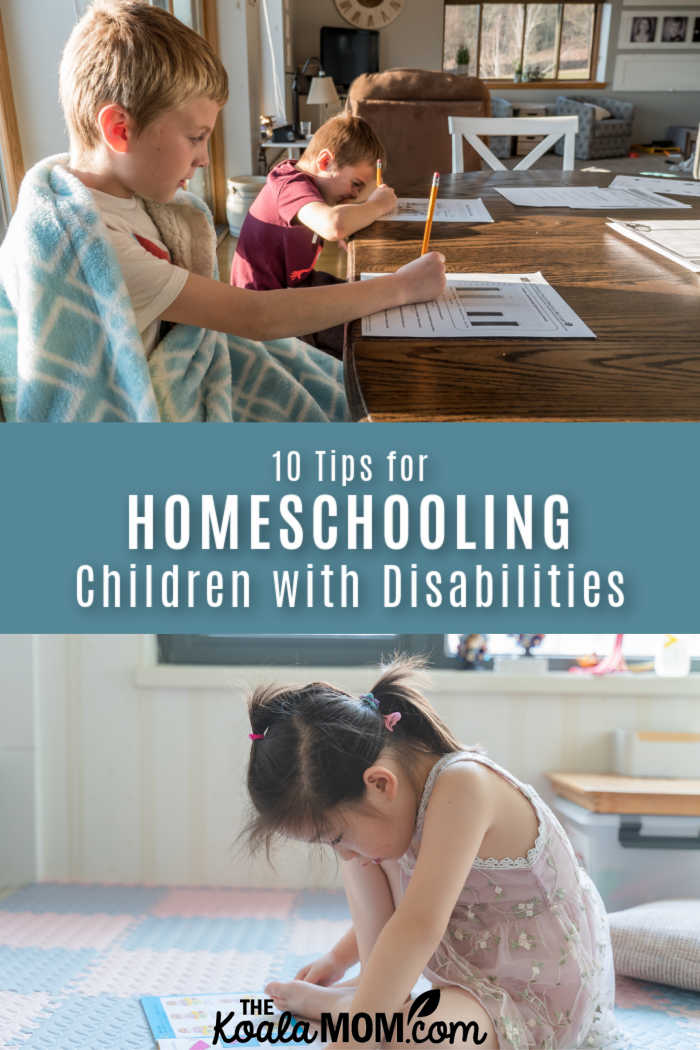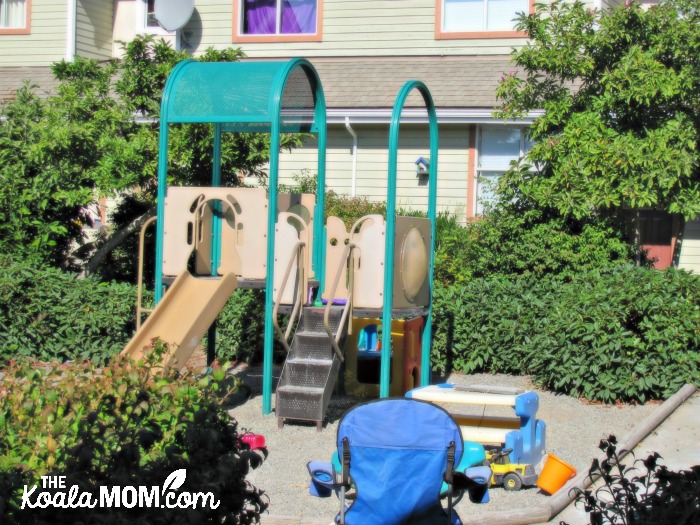Sending your children to school when they have disabilities can be a terrifying thought and one you can eliminate with homeschooling. Is homeschooling children with disabilities the answer?
Making sure your child has the best education possible is one of the top concerns for parents around the world. Homeschooling is a wonderful way to make sure your child receives a good education, especially if they have a disability that might hold them back in a generic school.

There’s no doubt that homeschooling can be costly. That said, there are ways to pay for it, either through finding free resources, creating your own curriculum, government help or by putting forward a compensation claim for a disability caused by medical negligence. Whatever you decide, there are avenues to take which can significantly benefit your child.
In this post, we’re going to briefly cover the benefits of homeschooling children with disabilities. Then, we’ll share our top tips on how to go about it. Take a look.
Is Homeschooling Better Than Public School for Children with Disabilities?
Before we get into the top tips on how to homeschool your child, is it any better than sending them to a public school?
Children with disabilities often need extra attention to help them understand a task. With homeschooling, you are able to focus on working with the specific disability your child has instead of sending them to a special education school where they will mix with children with various disabilities. This way, they get your full attention, which is more beneficial than a small measure of attention from a teacher or educational assistant at a public school.
Homeschooling a child with dyslexia can be intimidating. Many parents feel overwhelmed with the various information out there on how to help students with dyslexia. However, you just need to teach YOUR child with dyslexia, and homeschooling allows for individualized education to help meet your child’s specific needs. ~ Andrea Dillon in “Advice from the Experts to Handle Homeschooling“
You also won’t have to worry about your child keeping up with the rest of the class or being held back by them, as you can teach your child at their own pace.
The only downsides to homeschooling are losing out on money by not going to work, and there being no separation from your work and home life. However, as we’ve seen, there are ways around this, including compensation and government funding; it’s really down to the severity of the disability. For many parents, having control over the education of children with disabilities may just outweigh the negatives here.
No sooner did I realize, my kiddo just didn’t love… heck she didn’t even like going to school. The pace was just not her pace. The style just wasn’t her style. She wasn’t herself, and she lost her joy in the confines of a brick and mortar school. I didn’t understand this mindset because admittedly, being a keener, social butterfly myself – I recall LOVING school. But that is simply not the case for my resistant little learner. She loved her amazing teachers and adored her little friends, but she was so caught up in her own feelings of discomfort, that she just didn’t have the interest to interact. And often she kept to herself. The mere act of going to school was draining her and dimming her bright light, and unfortunately, it took a pandemic for me to realize this. ~Deb from Sass & Smalls about choosing to homeschool her special needs daughter
Top 10 Top Tips for Homeschooling Children with Disabilities?
Now that we know some of the benefits of taking your disabled child’s education into your own hands, it’s time to get into the details on how to homeschool them.
1. Create a relaxed, segregated environment
First off, designate a specific place in your home where you aim to teach your child. Homeschooling can easily get muddled in with regular life, and the child needs to be able to associate a certain place with learning.
Make the space a relaxed environment that is stimulating but not overwhelming, and free from all outside distractions so they can focus solely on their learning. Make sure to put in pillows, bean bags and other things to stop it looking too much like a stuffy school classroom. You may adjust this space throughout the year as you figure out what works or doesn’t work for your child.
I have a very bright and creative little girl, but I have always known that she requires a different approach to learning. A sit down class with a plethora of distractions was just not ideal for her. From the rumblings of the fish mascot’s aquarium, to the giggles of the group of girls in the pod next to her, to the tick tocking of the oversized, colorful clock staring at her from behind her teacher – she just couldn’t concentrate on what was being taught. ~ Deb of Sass & Smalls
2. Go at your child’s pace
One of the benefits of homeschooling children with disabilities is that you can gauge the speed at which your child is learning and set your own pace. It’s important to have a daily routine but if your child isn’t able to progress through the lessons at the pace you’ve set, adjust it for them. You may also find that your child is ahead in a certain subject, or is moving way faster than the curriculum; again, adjust to their pace and let them work ahead or find more challenging topics to study.
Children with disabilities often need frequent breaks. Making sure they get regular breaks will help them learn. You can make every moment into a teaching moment as well; for example, a trip to the doctors could be the time to teach them about the human body or an excellent way to make their recent biology lesson more hands-on.
3. Teach them that reading can be fun
Reading is an essential part of learning, so it’s critical to make it as fun as possible so your child is encouraged to put in the effort. Children with disabilities typically take a while to master letters and basic sounds, but if you’re patient, you can get them reading.
You can use tactics like flashcards of basic letter sounds, quizzing your child on them and blending them together to show them how words are formed. A more active child may have fun if you spread flashcards with letters or words on the floor and have them run or jump to the letter or word you call out. Look for a reading curriculum that is designed for your child’s special needs (for example, there are many curriculum options available for dyslexic students) and talk to other parents of special needs children about what has worked for them.
The most important thing to remember is to find the right books as they will be more patient if the book is about something they like. Visit your library to find books on topics your child enjoys. And don’t forget that reading aloud frequently to your child will help them learn to read too.

4. Put your lessons in the right order
If there’s a subject you know your child doesn’t like very much (for example math), figure out the best time to do it. Maybe doing math first and then moving on to a subject your child loves (like science) will motivate them to get math done. Or maybe starting with a fun subject like history will get you into your school day, and you can tackle math after your child feels somewhat confident after some other learning successes.
Remember that the early hours are often when your child is most awake and able to absorb difficult topics. It may help to schedule the bad topics before reading time, or even before lunch so they want to finish quickly and get to the grub.
It makes the most sense to jump on their most optimal learning hours to tackle some of the stuff they would be more likely to resist later on in the day. It doesn’t have to be the first subject, but perhaps consider covering the more difficult topics earlier in the day rather than later. Or if they seem to be more energetic in the late morning or after lunch, than try that time slot. And remember, it’s homeschool – you, as well as your reluctant learner, know that everything is flexible. The point is – a late afternoon jam-packed with the stuff that makes them cringe, is not only going to end your day on a bitter note, it’s going to make this temporary moment in time feel like an eternity. ~ Deb of Sass & Smalls
5. Praise them for their strengths
When a child with special needs goes to public school, they are often sent home with reports of their unusual and distracted behaviour. When you’re homeschooling children with disabilities, you can take a different approach and actually praise them for the good things they do instead of highlighting the negatives.
One area where your child may be able to shine is on social media. Here, they can be seen for their skills (maybe at writing, shooting video, taking pictures, drawing, crafting, etc.) rather than just their disabilities. Consider whether social media could be beneficial for your special needs child, and which platform they’d have the most success with.
6. Take a break when you get frustrated
Having a child with cerebral palsy, Downs syndrome, autism, or any other disability that impedes their ability to learn can make teaching a mental and physical challenge. You have to make sure both you and your child take a break when you get frustrated.
The best way to deal with frustration is to be flexible and focus on what you can control instead of things that could go wrong. Your child will have their bad days but you have to push through and not turn it into a bad week because you’re always expecting the worst.

7. Use the resources at your disposal
Despite all your best efforts, there might come a time when you need extra help to be able to carry our homeschooling for your child. Depending on your child’s needs, you might need to partner with a speech therapist or occupational therapist. Homeschoolers in BC can access quite a few learning support services through their school; make sure you are talking to your teacher about what resources are available to them (and pushing for those supports if necessary).
Therapists and other support staff can help your child with enunciation or the fine motor skills required to improve their ability to learn. Also, if you’re not confident teaching certain subjects, there’s no harm in hiring a tutor to teach those subjects for you, or relying on online tools.
8. Develop an Individualized Education Program
When you send children with disabilities to a public school, they devise an Individualized Education Program (IEP) for them. These programs are a way to identify goals and benchmarks and monitor your child’s progress over time. If you homeschool in a state or province with some government oversight (like BC and Alberta), your home education teacher will likely still develop an IEP for your special needs child.
If there is no support for homeschoolers in your province, you can use online IEP generators. These will help you set your own goals and benchmarks, so you can keep tabs on how well your child is doing with their learning. Check back on your goals throughout the year to make sure your child is on the right track.
9. Prepare your child for big changes
When you’re planning an IEP, or whatever way you decide to plan the year ahead for your homeschooling, try not to put in too many sudden changes. Children with disabilities can often react badly to abrupt change. So, make sure to phase in new topics slowly and don’t change everything all at once.
10. Make time for yourself
As much as you might want to be a super-parent who does everything for their child and never needs a break, you should probably take a break when you can. You could make friends with other homeschooling parents and set a day and time to go for a coffee and swap stories.
If you’re less of a social butterfly, you could take some time to do whatever activity you used to do before you took on homeschooling. This will remind you of your own interests, so you can feel like you’re more than just a teacher and a parent.

Is Homeschooling the Right Choice for You?
Here I’ve discussed the benefits of homeschooling over public schooling for children with disabilities. I’ve also shared my top 10 tips on how to go about it if you choose to homeschool.
Homeschooling children with disabilities can be a rewarding endeavour, but it can also be very difficult. The tips we’ve laid out above will help you, but there are going to be challenging times and it may take some getting used to.
All you need to remember if you choose to homeschool your child are the reasons you’re doing it in the first place. If you truly believe this is the way to give your child the best education possible, then you shouldn’t let anything stand in your way.
More Resources for Homeschooling Children with Disabilities:
Are you homeschooling children with disabilities? What tips would you share?

2 Comments
Please don’t recommend Autism Speaks as a resource. Autism Speaks is pretty universally hated by actually autistic people, and has done a lot to harm autistic people with harmful public awareness campaigns that blame autistic children for everything going wrong in their parents’ lives and even encourage sympathy for murderers of autistic children. I would recommend pointing people to an organization that includes autistic adults on their board of directors, such as the Autistic Self-Advocacy Network, because many autism organizations have supported things that are harmful to autistic people.
Ettina – thank you for the feedback. I’ve updated the link.